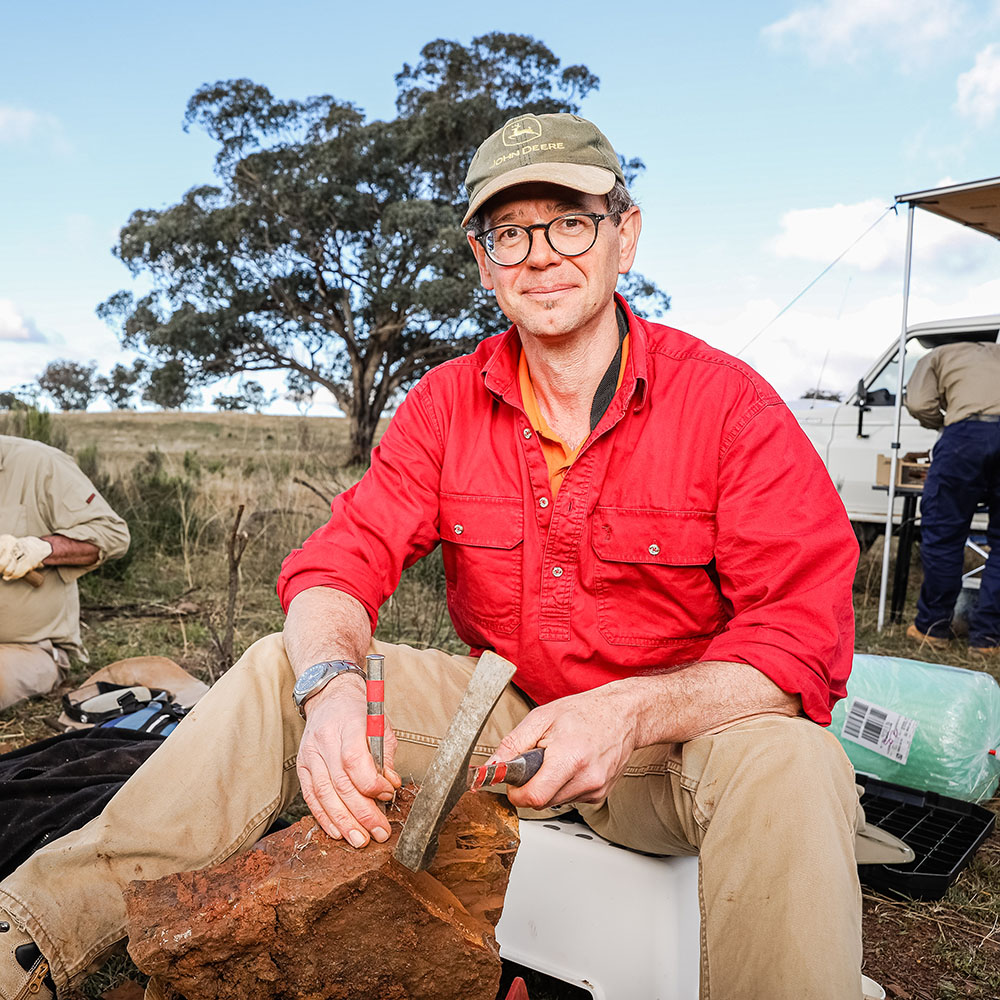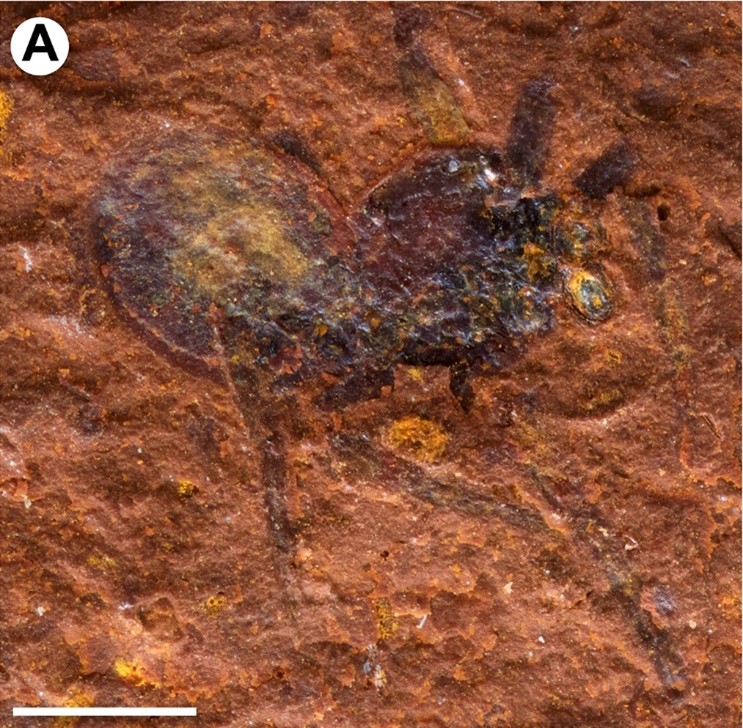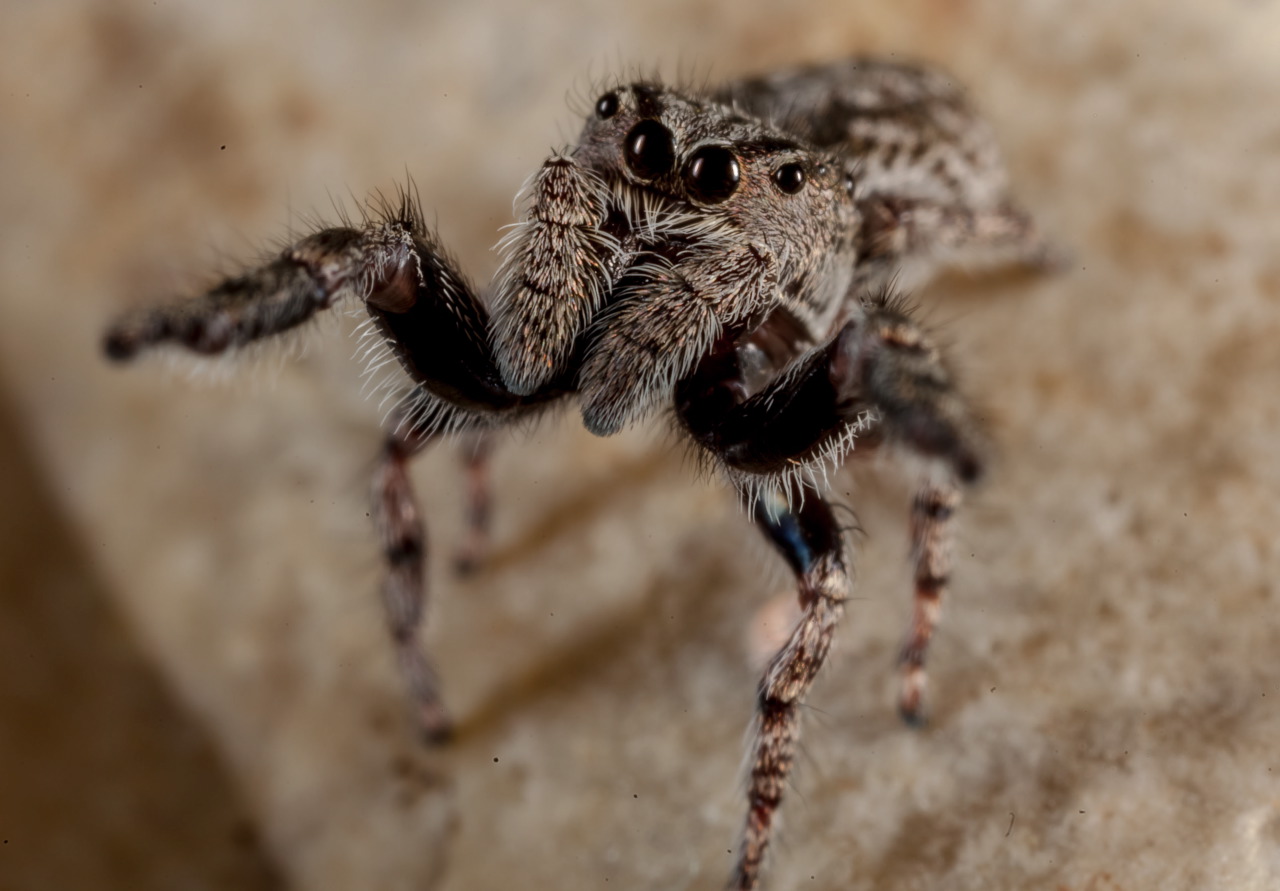Kailey Tonini
5 October 2023: University of Canberra Associate Professor Michael Frese contributed to the discovery of the first fossil of a jumping spider in the southern hemisphere, in collaboration with researchers at the Australian Museum and CSIRO.
Found at a fossil site in central New South Wales, the 2.5mm fossil is so well-preserved that parts of the spider’s internal structures are visible under a microscope – they reveal that the lineage of this spider has remained largely unchanged for 15 million years.
Dr Frese, a trained virologist from the University’s Faculty of Science and Technology, uses his experience in microscopy to take detailed, microphotographs that often reveal detailed and unexpected information about fossils.

He has been working alongside Dr Matthew McCurry, a palaeontologist at the Australian Museum and University of New South Wales, and Dr Barry Richardson, honorary fellow at the CSIRO’s Australian National Insect Collection, on fossils excavated from McGraths Flat, a recently discovered fossil site near Gulgong, NSW. The site is unique for its incredibly well-preserved fossils that are embedded in goethite, an iron-rich mineral.
The discovery of the first jumping spider fossil found in the southern hemisphere was almost an accident.
“We collected a rock from the site because it contained a beautiful fossil flower,” Dr Frese said. “I was photographing it a few weeks later and the imaging system crashed, so while I was waiting for it to reboot, I used a microscope to look at the rock surface around the flower and found a spider! It’s so small that it was overlooked in the field.”

A few months later, Dr Frese was working beside Dr Richardson at the Australian National Insect Collection’s photomicroscopes.
“Michael noticed a jumping spider on my screen and offered to show me a tiny spider fossil he’d noticed while studying plants from a fossil bed … I knew straight away we were looking at the first fossilised jumping spider from the southern hemisphere,” Dr Richardson said.
“When Barry told me that ‘my’ little spider is a jumping spider and that it’s actually a very important fossil, I was over the moon!” Dr Frese said.
The jumping spider lived in the Miocene epoch and is between 11 and 16 million years old. The large lenses of its two front eyes, setae (stiff hairs), one fang and most of its legs are visible, as well as some internal structures that include parts of the pharyngeal plates in its mouth and nerves that connect the lateral eyes to the brain.
“[Michael] found that the pharyngeal plates of the fossil were quite similar to those [I] dissected from modern specimens,” Dr Richardson said.
“Michael realised that there was a strange set of parallel tubes that looked like a neuropile – a bundle of nerves connecting the eyes to the brain. Its diameter would have affected the speed of signal transmission along the nerves. Having fossils that allow us to study the evolution of brain functions is very exciting.”
The team then discovered the fossil belonged to a genus of jumping spiders (Simaetha) that still exist in parts of central Queensland. Dr McCurry’s careful analysis of the climate profile of the fossil site revealed that its modern cousins live in the same type of environment as the fossilised jumping spider.

“From DNA studies, we knew the group this genus belongs to probably evolved in Australia only a few million years before this spider was fossilised. The fossil shows that the distinctive morphology of Simaetha had evolved fairly quickly, but for the next 15 million years it didn’t change!” Dr Richardson said.
Australia has around 1,200 to 1,500 species of jumping spiders found throughout the country, but only 500 have been formally named. They are known for their tiny size, curiosity, bold personalities, brilliant colours and phenomenal jumping ability.
Fossils of jumping spiders around the world are rare, with most preserved in Baltic or Mexican amber in the northern hemisphere. The discovery was recently published in Zoological Journal of the Linnean Society, titled ‘Description and evolutionary biogeography of the first Miocene jumping spider (Aranaea: Salticidae) from a southern continent’.
The researchers also recently formally named and described another fossil spider, Megamonodontium mccluskyi, in a paper published in the 2023 Zoological Journal of Linnean Society.
It is the first ever spider fossil of the Barychelidae family, also known as brushed trapdoor spiders and comprising about 300 species, to be found.
The fossil is approximately five times larger than its living relatives that currently live in wet forests, from Singapore to Papua New Guinea.
Image of Associate Professor Michael Frese by Salty Dingo, 2020.
Image of fossil jumping spider by Associate Professor Michael Frese, University of Canberra.
Image of extant jumping spider by Robert Whyte.


